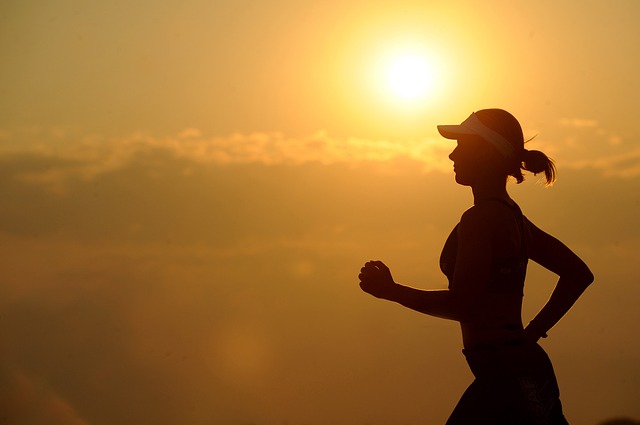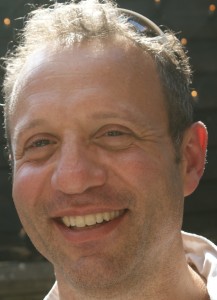
Aloha! Today we have another excellent post from Matt Wyon, PhD, President of IADMS / Professor of Dance Science at Wolverhampton University (UK) — this one is on running!
I was always told never to run, as a dancer –
Unless you can run in good leg alignment! So many dancers end up running in turn-out (because of the muscle imbalance in the leg and hip), and that isn’t so good for you. But Matt has some excellent current thoughts on the subject…
Enjoy, and Pass It On !!
Jan Dunn, MS, Dance Wellness Editor
by Matthew Wyon, PhD
For years dancers have been told “don’t run!” as it will give you shin splints, work the wrong muscles, make you inflexible, etc. Deborah Bull, ex-principal at the Royal Ballet, UK was the first world-class dancer to openly admit to running, and swore by its benefits.
To answer some of the concerns:
Yes, running can give you shin splints, but so can dancing. To reduce the chance of getting shin splints start to run during a holiday period, start gradually and wear good running shoes and ideally don’t run on roads or sidewalks straight away.
Yes, it does work different muscles from dancing but this is good. Dancing often causes a muscle imbalance between the internal and external hip rotators, with the latter becoming much stronger because of the time spent turning out; this imbalance can lead to injury (Editor’s note – remember “Causes of Dance Injuries”?). Running works in the internal rotators and therefore helps to improve this balance. Running is a technique as well and you need to make sure you have good alignment and are not running turned out. Just as with dance, running technique starts to go astray when you are tired, that is why it is important to start slowly and build up distance and speed gradually.
(Editor’s note: But remember that if you are doing supplemental training outside of the dance class – such as Pilates, etc. – to address those dance-caused imbalances, then you are less likely to have them, and thus in better condition to do an outside activity like running).
Yes running can make you inflexible, in fact some of the most inflexible people are runners – but that is because runners just don’t stretch!
What are the benefits to running?
- Compared to other aerobic training styles there is a better cross-over to dance. This means it uses more of the same muscles in similar action patterns than rowing, cycling or swimming for instance.
- You will get (aerobically) fitter faster with running than other training methods, as you are having to carry your own weight and aren’t sitting down. So you don’t have to run for as long as you would need to cycle to get the same benefits – quality rather than quantity.
- You will jump higher! Running develops our jumping muscles and helps us to utilise the elastic energy in our muscles and tendons
How do I start?
- Slowly! Buy some running shoes, don’t just use your own sneakers! Look for actual running shoes rather than fashion sneakers – they don’t have to cost a fortune.
- Start during the holidays, warm up first and then start with gentle “interval training” – jog for a minute, walk for a minute for 20 minutes, stretch afterwards. Have a rest day the next day. Over the next few weeks gradually increase the jog time and decrease the walk time but keep to 20 minutes total.
How do I progress?
After you can jog for 20 minutes, use the same principles to start to increase your speed. You don’t need to increase the time you spend running, just start to run slightly faster using the interval method. So jog 1-minute, run slightly faster for 1-minute and repeat.
Recovery
- Always stretch afterwards.
- Try and have a rest day after a run.
- When you are doing lots of jumping during dance don’t run as much, maybe just cut back to once a week.
I know it might be hard to comprehend, but running can be fun. One day you will go out and suddenly enjoy the experience of running outside, in the fresh air–and your body enjoys it, too!

Matthew Wyon, PhD, is a Professor in Dance Science at the University of Wolverhampton, UK and a Visiting Professor at the ArtEZ, Institute of the Arts, The Netherlands.
At Wolverhampton he is the course leader for the MSc in Dance Science and Director of Studies for a number of dance science and medicine doctoral candidates. He is a founding partner of the National Institute of Dance Medicine and Science, UK.
Prof. Wyon is President of the International Association for Dance Medicine & Science and a past chair of the Research Committee. He has worked with numerous dancers and companies within the UK and Europe as an applied physiologist and strength and conditioning coach.
He has published over 80 peer-reviewed articles in dance medicine and science.





I have so much respect for Dr. Wyon and his excellent research on dancers. I was concerned that some might misinterpret the recommendations here by taking up traditional steady-state running for 30+ minutes, which I believe is excessive and unnecessary for dancers trying to improve aerobic fitness. I agree that 20 minutes of interval work is a solid form of cross training for dancers, particularly since a workout like this may also improve muscular power, which is arguably more important than aerobic fitness for performing dancers.